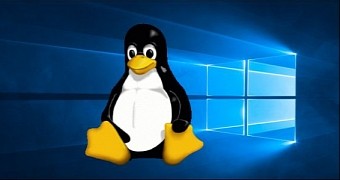The death of Windows 7 was seen by many as a major opportunity for the Linux world to gain new users, especially as many of the devices where Microsoft’s 2009 operating system was installed were running on old hardware.
While Microsoft itself recommended Windows 7 users to buy new devices to make the most of Windows 10, Linux lured them into its own ecosystem with the promise that new hardware wouldn’t be required to benefit from top performance.
And given the improvements that many Linux distros received lately to become a more familiar home for former Windows users, it goes without saying that the demise of Windows 7 was considered the right moment for Linux adoption to skyrocket.
The actual chances for Linux to benefit from an en-masse transition were extremely reduced, as I said on several occasions before Windows 7 reached the end of support. And new market share data confirms that despite all the attempts to bring more people to the Linux side, most Windows 7 users choose to stick with Windows going forward.
The market share of Windows overall hasn’t changed too much in the last month, despite the retirement of Windows 7.
For example, Windows controlled 88.70% of the desktop market in December, while Linux was installed on 1.51% of the devices out there. At the end of January, the month when Windows 7 was retired, Windows was running on 88.14% of the systems while Linux actually declined to 1.47%.
macOS, on the other hand, appears to the one which benefitted from the demise of Windows 7, as its market share increased from 9.15% to 9.74%.
These figures aren’t necessarily surprising.
Windows 7 users who pushed back the upgrade to Windows 10 until the very last minute are typically users who want nothing more than a familiar experience on their desktops. Leaving aside the companies where an upgrade to Windows 10 is a much more expensive process, Windows 7 users who aren’t interested in installing a newer version of Windows aren’t necessarily tech-savvy people.
Which means the chances for these users to make the switch to Linux side are extremely low, as many are very reluctant to learning a new operating system from scratch.
And these numbers show that Windows 7 reaching the end of support hasn’t changed home users’ perception over Linux. One year ago today, Windows was running on 86.23%, while Linux actually controlled 2.45% of the desktop market. So the demise of Windows 7 actually caused an increase in market share for Windows, which in its turn produced a drop for Linux.
Without a doubt, we really shouldn’t expect any sudden change in the coming years, especially as Microsoft is now betting all-in on Windows 10 moving forward. While Windows 8.1 is still supported, its end of support due in 2023 won’t have such a big impact on the Windows overall market share, especially as it’s currently accounting for only 3 percent of all Windows devices out there.
Linux, on the other hand, will remain a strong option for tech-savvy users and anyone brave enough to give it a try. The switch to Linux isn’t something that’s exclusively aimed at power users, however, and the improvements that some distros have received lately make them a lot more user-friendly, specifically targeting beginners coming from Windows.
In the coming months, Windows 10 is expected to increase its market share, particularly as more users upgrade from Windows 7. The market share of Linux is unlikely to experience any substantial change following the transition off Windows 7.

 14 DAY TRIAL //
14 DAY TRIAL //